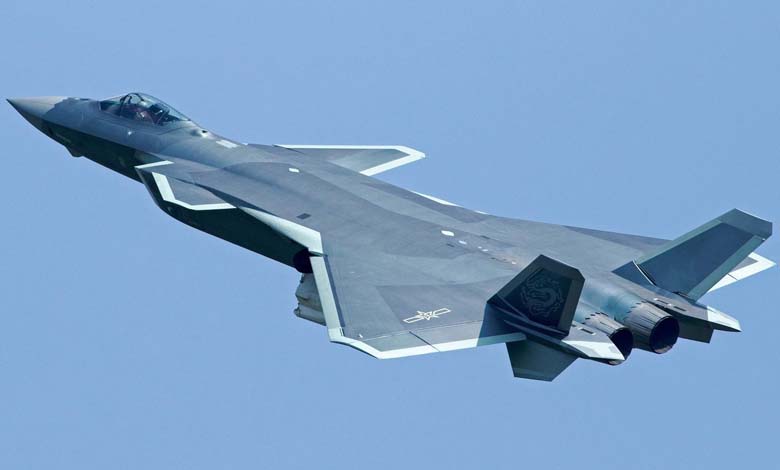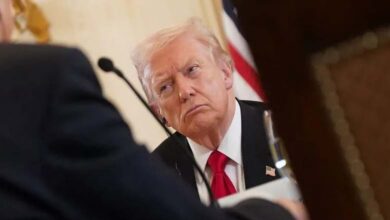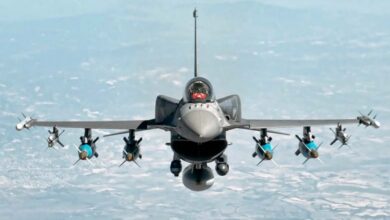China bares its teeth… A major production leap for stealth fighters

Since China first unveiled its prototype of the J-20 stealth fighter in December 2010, it has become the subject of much speculation.
According to a report by Military Watch magazine, the post-Cold War world — particularly after the collapse of the Soviet Union — has seen a notable decline in fighter jet production with each new generation, primarily due to skyrocketing costs and increasingly complex technologies.
-
J-20 Fighters: Beijing under the Protection of the “Phantom”
-
Chinese J-10C vs. Russian MiG-29M: Which Fighter Jet Is Best for Egypt?
However, unlike the United States and Russia, which maintained large-scale production of their main fighters — notably the F-35 — and exported them extensively, China did not follow the same path with its most advanced aircraft. The J-20 is essentially banned from export, meaning that all production is exclusively reserved for the Chinese Air Force.
This unique approach has raised questions about the final production volume of the J-20, especially in light of the absence of other fifth-generation models in the pipeline, positioning the J-20 as the cornerstone of China’s air force modernization for decades to come.
-
“Zero Hour” Nuclear Crisis: Where Would the U.S. President Hide?
-
Decoding China’s Enigmatic Fighter Jet: A Triple-Power Revolution in the Sky
In 2018, military experts told the U.S. House Permanent Select Committee on Intelligence that China could produce up to 500 J-20 aircraft. However, the accelerated pace of production in the following years led analysts to revise their estimates. It is now almost certain that the final number will easily exceed 700 units — and may even go significantly higher.
Abraham Ait, one of the leading experts on modern Chinese fighter programs and author of The Chinese Stealth Fighter: The J-20, a Mighty Dragon and a Growing Challenge to Western Air Dominance, explained that the rapid expansion of J-20 production facilities was a clear sign of an ambitious plan to build the aircraft in large numbers.
-
“The White Emperor”: Discover China’s Revolutionary Sixth-Generation Fighter
-
China Changes the History of Warfare with a Non-Nuclear Warhead
He noted that China’s growing demand for fifth-generation fighters is primarily due to the anticipated spread of American F-35s among potential adversaries, with the number expected to exceed 2,000 units in the coming years — even if production is scaled back.
This reality makes it implausible for China to settle for a limited number of J-20s. On the contrary, it compels the country to produce them in large quantities to ensure a balanced air power equation.
By 2023, reports indicated that annual J-20 production had reached between 100 and 120 aircraft — a figure unmatched by any Chinese fighter in decades, and unmatched by any other twin-engine fighter worldwide in the same period. These numbers have fueled projections that total production could surpass 1,000 units in the near future, representing a significant leap in the capabilities of the Chinese Air Force.
-
The Technological Revolution and Irregular Warfare: Why is China Surpassing the U.S.?
-
“The White Emperor”: Discover China’s Revolutionary Sixth-Generation Fighter
Ait noted that the last time China produced a fighter in such large quantities was in the 1950s and 1960s with the J-6 — a much smaller and far less advanced aircraft compared to the J-20.
This scale of production indicates that the J-20 is not a niche, elite aircraft in limited numbers, but is instead likely to become the backbone of the Chinese Air Force, equipping nearly half — or possibly the majority — of its combat units.
Such a profound shift has not been seen in China for decades and reflects a clear strategy aimed at building an air force capable of confronting future challenges — especially as the J-20’s roles expand and diversify thanks to its cutting-edge stealth technology and superior performance compared to other fighters like the J-16.
-
China seeks mediation role to halt Gaza War
-
Despite China’s penetration.. Why has the American strategy become important?












